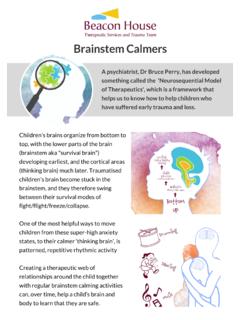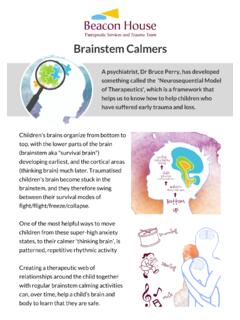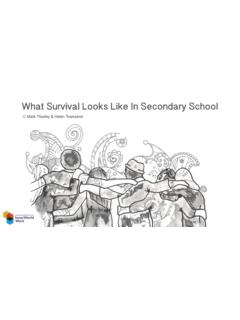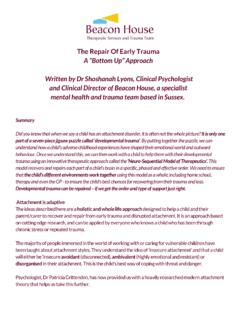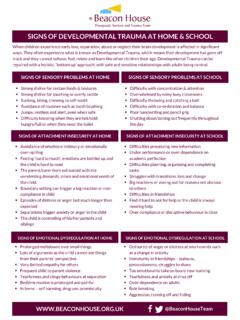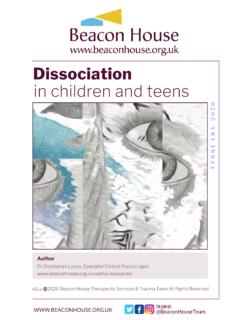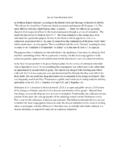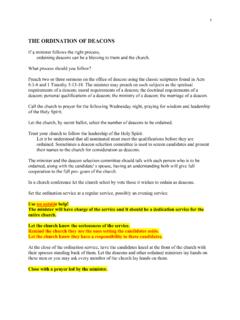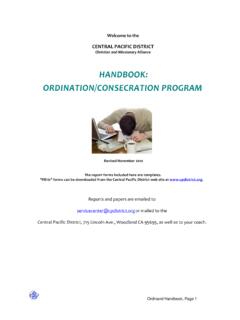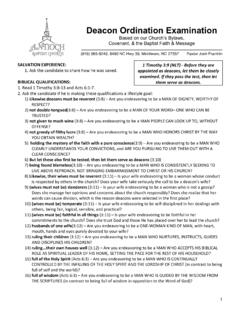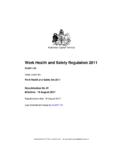Transcription of Sensory processing, coordination and attachment Article
1 Written by Ruth Stephens, Specialist Paediatric Occupational TherapistSensory Processing, coordination andAttachmentBabies and children first learn about the world aroundthem through their senses. Playing and interacting witheverything around them stimulates the senses andcreates engagement with others, which forms aplatform from which they see the world and relate to follows that difficulties with Sensory processingpotentially affect all the skills that a child develops. This Article * explains how a goodunderstanding of children ssensory needs as well as theimpact of early stressfulexperiences on the senses can leadto a better understanding of theirmovement, behavioural andlearning needs. *Readers may also be interested toread 'The Repair of Early Trauma, aBottom Up Approach' found ,PROCESS,RESPONDS ensory Processing is the body's ability to receive Sensory information into the nervous system,process it and then allow the body to respond appropriately.
2 Sensory ProcessingDifficulties in Sensory processing can affect every aspect of a person's functioning - fromposture, to catching a ball, focussing in the classroom and engaging in social , the good news is that the nervous system has "plasticity" which means that with theright help at the right time, it can heal and repair as new brain pathways are created whenactivities are repeated during therapy Based on Williams and Schellenberger s model Sensory processing difficulties can be astandalone disorder called SensoryProcessing Disorder (SPD) or they can belinked to other things. For example, SPDcan be linked to a child s experiences ofearly trauma or attachment disruptionsbut it can also be linked with dyspraxia,developmental delay, autism, Fragile Xsyndrome, ADHD and speech andlanguage disorders among other things.
3 Sensory processing isfoundational to our ability toengage with the world andfunction in it. If our ability toprocess sensations is notworking properly we willhave difficulty with dailyliving activities. This diagram shows how the nervous system and Sensory developmentunderpins many other skills and areas of engagement with the world aroundus Nervous System Foundations2 Did you know that you have not only got 5 Sensory 8? Sensory Processing (cont)The 5 commonly known senses are thought of as the environmental senses and help us getin touch with the outside world: touch, taste, hearing, vision and smell. There are 3 other senses which are more internal and tell us about our body. In utero and from thebeginning of a child'slife, they receivestimulation from oneor more sensorysystems at a time oreven multiple sensorysystems.
4 3 Sensory Processing (cont)Located in the inner ear, this system helps us know whereour head is in relation to gravity. It helps us adopt an uprightposture. It helps us to move in a coordinated way and works closelywith the visual sense to help us move our limbs to reach,grasp and also to focus on tasks. Something called thevestibular ocular reflex helps with this. A young baby needs a great deal of good vestibular inputsuch as rocking by primary care-givers. The vestibular system is very important in helping toregulate us. This important Sensory system underpins many other bodyand mind functions. VESTIBULAR SYSTEMPROPRIOCEPTIVE SYSTEM This system helps us to know where our limbs are in space andhow hard we are pressing, pushing or pulling. For example, ithelps us to move in a coordinated way, hold a pencil with justthe right amount of force and helps us to judge how hard tothrow a ball for young baby learns about proprioception even in the tightspace they are in utero, then after birth tight, cosy cuddles arevital to develop this sense.
5 Proprioceptive activities may be either: Active: Where we activelyparticipate in movements involvingresistance such aspushing, pulling orpressing. The child isthe instigator of themovements. Passive: Where resistance is applied, someone/something pressing on the body. Let's explain the senses in a bit more detail: 4 Sensory Processing (cont)The tactile system is vital in enabling a child to developnot only awareness of objects around them but todevelop a sense of self in relation to others. A childwith poor tactile awareness will drop things and lackfiner coordination . They may also struggle to knowwhere to put their feet and trip sensitivities will affect a child's ability toengage with the world and to tolerate clothing or atoothbrush in their child with a lack of good touch or inappropriatetouch in early life may well develop tactiledefensiveness or tactile seeking behaviour.
6 This meansthat they will pull back from some touch sensations orin contrast may seek out fidgeting or touching thingsconstantly. TACTILE SYSTEMAUDITORY, VISUAL, TASTE AND SMELL All the senses help us to learn about the world aroundthem and to engage socially. The oral senses (this includes tactile oral andproprioceptive oral: chewing) are vital in secureattachments. Sucking is usually related to nurture andinfants usually explore their world first orally. INTEROCEPTIONI nteroception is the body's very important hidden sense which tells uswhat is happening inside our body, and it is often overlooked. It enables us to know whether we feel hungry, need the toilet or have aheadache. It enables us to know how fast our heart is beating or howdeeply we are breathing. This is very important in being able to care for ourselves properly andmeet basic needs so that we remain safe.
7 5 Sensory Processing Disorder Arousal, attention and Sensory modulation Types of Sensory Processing Disorder Sensory Modulation Disorder Sensory BasedMotor Disorder Sensory Discrimination Disorder Sensory Over ResponsiveSensory Under ResponsiveSensory Seeking/ CravingVisual Auditory Tactile Taste/Smell Position Postural DisorderDyspraxia(Miller L. J. 2004)A child who has difficulties with aspects of Sensory processing may have difficulties withregulating their attention levels, which is known as Sensory modulation/ Sensory regulation . A child with Sensory modulation difficulties may be very reactive, sensitive or to the contrary -shut down from Sensory input in order to protect themselves from the discomfort theyexperience. A child may be seeking out Sensory experiences which means that they are constantly seeking outmovement, noise or tactile sensations.
8 Alternately, they may be Sensory -over or Sensory -underresponsive. Each sense is set differently to what feels "just right"; and the feeling of "just-right" willvary from person to person. Some senses maybe hyper (over)-responsivemeaning a verylittle amount of asensation can beover-stimulating,so person"avoids". Other senses canbe hypo (under)-responsivemeaning it takes alot of a sensationbefore a personfeels "just-right",so person "seeks". 6 Sensory Processing Disorder (cont) Understanding Sensory over responsiveness and Sensory under responsiveness If a child is under-responsive it means that thenervous system is not receiving enough stimulationthrough one or more Sensory organs. They willneed additional input to help them be aware ofwhat is happening in that part of their nervoussystem.
9 So for example a child who is under responsive toauditory input may lose focus because they don'tregister that someone is talking to them. Or theymay trip over obstacles because the visual systemis not recognising that there are steps or roughground underfoot and does not send the messagefast enough to the muscles and joints to help themadjust their stride to avoid the obstacles. Thesechildren will need additional, intentional input tohelp them to learn to react to stimulus. If a child is over-responsive to Sensory information,this means that they will have trouble suppressinginformation that they receive into that sensorysystem. They will over react to a normal amount ofsensory stimulation and therefore will feeloverloaded and may experience hyper-sensitivity. For example with the tactile sense, they will besensitive to some touch or textures and find thatsensation uncomfortable.
10 The effect may becumulative and by the end of the day they may beunable to process additional information andbecome distressed. If they have an over responsivevestibular system they will be affected by motion tothe point that they may have motion sickness. Theymay lose balance and avoid sport activities. This willhave the long term effect of poor coordination . theywill need carefully planned Sensory input to helpthem become less reactive to the uncomfortableinput. 7 Sensory Processing Disorder (cont) These children may then be easily over aroused or under aroused. If arousal levels are notmodulated the following difficulties can occur: Poor postural control Poor hand eye co-ordination Difficulty with spatial awareness Visual perception deficits Difficulties with learning Poor self esteem Distractibility/over excitable Sensory defensiveness (dislike of certainnoises/touch/light/fear of rocking) Need for extra stimulation to senses such assucking, rocking, repetitive movements In turn all these Sensory disturbances can then lead to developmental delay in a child Sensory processing is very much linked to our early experiences in that having inappropriatesensory input may result for example in hyper vigilance.


